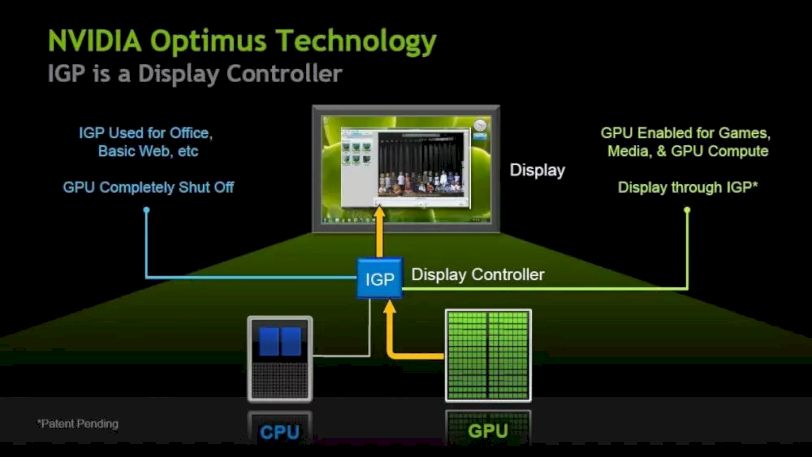What is MUX Switch

Surely you have ever heard about the MUX Switch. This technology is present in the new gaming laptops, and with which an increase in performance can be achieved at the cost of consuming the battery more quickly. Here we are going to see how this works and how you can use it.
What is NVIDIA Optimus (MSHybrid)?
Many gaming laptops have two GPUs. On the one hand we have the iGPU, integrated into the Intel or AMD processor, and on the other hand we have discrete graphics or dGPU, such as a dedicated graphics card such as NVIDIA GeForce, AMD Radeon or Intel Arc. ok this
The iGPU has a lower performance, but also the battery consumption is lower. Therefore, the idea of this technology is to use the iGPU to save and when more performance is needed to use the dGPU.
So what NVIDIA Optimus or similar technologies do is that when you’re working normal it will use the iGPU, which is enough, and when you open a game, or some other GPU-intensive software, the system is smart enough to run this heavy load on the dGPU.

What is a MUX switch?
Once you know this about these technologies that use one or the other GPU in systems with two graphics, now is the time to talk about the MUX switch or MUX Switch. As its name indicates, it is a multiplexer that allows you to manually enable or disable the integrated graphics, that is, the iGPU.
And it does this by physically changing the connection between the GPU and the screen. In this way, technologies like Optimus will not create those bottleneck problems. Although to obtain this improvement it is necessary that the laptop has this hardware switch physically implemented.
MUX Switch: additional functions
With MUX Switch you can also execute additional functions in some cases. For example, with Optimus enabled, technologies such as ShadowPlay or G-Sync could not be used, while without Optimus enabled and with the MUX Switch they will be available, since the dGPU is being directly connected to the screen without having to pass by the iGPU, which ace of these functions.
How do I know if my laptop has MUX Switch?
This is a question that many gaming laptop users ask themselves. Well, to find out, you should visit the official website of your laptop brand and search among the specifications or download the manual for your specific model. In this way, you will be able to know if there is a MUX Switch or not. Generally, it must be said that most of the popular brands of gaming equipment usually include it.
Advantages of the MUX Switch
Without a MUX Switch, the gaming laptop, no matter how powerful its dGPU is, will always be limited by having to pass through the iGPU, which is the one that is physically connected to the screen of your laptop. In other words, you only have to use technologies like Optimus with the performance problems that this implies, as I explained above.
I don’t have a MUX switch, can I bypass Optimus?
Another frequent question from users is if your gaming laptop lacks MUX Switch if you have the possibility to disable Optimus so that it does not generate that performance problem and increase the performance in video games. Well, it must be said that the best thing in these cases is if your laptop has a video output, such as HDMI, to connect an external screen, and if it is connected to the dGPU and not to the iGPU, then you can enjoy maximum performance using an external monitor. But you should check the specifications of your laptop to find out which GPU this video output depends on…
NVIDIA, faced with Optimus problems, released a new technology called Advanced Optimus, which is basically an automatic MUX Switch. Thanks to this improvement it will not be necessary to have to reboot to switch between the iGPU and the dGPU. Basically, it is smart software that when you use the laptop for internet browsing or other smooth workloads, it will use the iGPU-Display. Instead, when you use heavy graphics loads like video games, then it will use dGPU-Display.
Obviously this is preferable instead of having to manually reboot the system every time you want to change. Especially if you have some computers like the Dell G15, which means having to go into the BIOS/UEFI to make the change, since it’s only allowed from there, with no software interface for it.